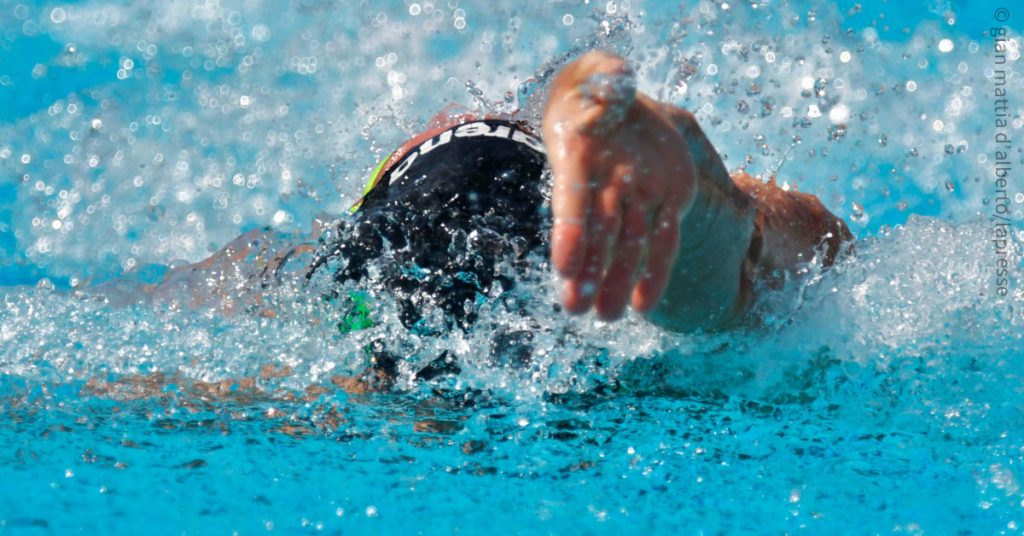The single-arm technique, like for example swimming backstroke with one arm, allows swimmers to think about what they are doing in the water. Attention is focused on both their body position and arm movement.
When we talk about backstroke, we are referring to one of the most elegant swim strokes. You can tell if somebody is a good backstroke swimmer, because they seem to torpedo through the water. There is no splashing as their arms enter the water and they move forward in a smooth linear motion. This is partly due to significant input from the legs and a powerful arm stroke. It is fair to say that the two distinctive traits of an excellent backstroke swimmer are a lack of resistance to the water resulting in efficient forward drive from their arm stroke
To begin with, let’s take a look at front resistance. The best way to reduce it is to make sure your head is perfectly in line with your shoulders. This creates greater buoyancy around the hips and, consequently, a more efficient leg kick. Unfortunately, swimmers tend to break down this perfectly smooth sequence by lowering their head, particularly during the thrust phase. This results in their body no longer being perfectly aligned in the water. Their arm stroke loses efficiency, their hips drop and their legs tend to bend creating an ant-aesthetic and relatively ineffective leg kick.
By correcting this mistake, your arm stroke will drive you forward much more efficiently. In previous articles we looked at the question of the angle at which your shoulders enter the water, which is so important when swimming backstroke. Your pull is most efficient when your shoulders enter the water at a marginally negative angle with your arm slightly bent and your fingers pointing outwards below the surface of the water.
One of the main problems swimmers encounter, though, is the tendency to try and enter the water with completely straight arms, over-rotating their body as they look for the water. This kind of movement requires much more strength and wastes too much energy.
The trick is to work on your swim technique, breaking down the movement and correcting it by working on one side of the body. The ideal technique for correcting this flaw is one-arm backstroke. The single-arm technique, like for example swimming backstroke with one arm, allows swimmers to think about what they are doing in the water. Attention is focused on both their body position and arm movement.
The drill is very simple. Starting from a conventional backstroke position with both arms along their sides, the swimmer starts their single-arm rotation. When their arm is level with their head and they are about to begin the catch phrase, the drill really begins. At this point, the swimmer will emphasise their body rotation making sure the opposite shoulder to the arm that is moving is level with their chin. Under water, on the other hand, the arm angle created by the elbow will be approximately 120-130 degrees. This will allow the swimmer to pull more powerfully and, hence, drive forward faster.
A variation on this exercise can be performed at the beginning of the catch phrase. The swimmer’s hand pauses briefly so that it can take hold of the water better through a small sculling action before continuing with the pull phase described above.
Single-arm backstroke is an excellent drill for reducing resistance to forward motion in the water and improving the efficiency of your arm stroke. This simple drill is an extremely important way of correcting and improving your backstroke arm movement.
